We tried an in-display fingerprint sensor (and loved it)
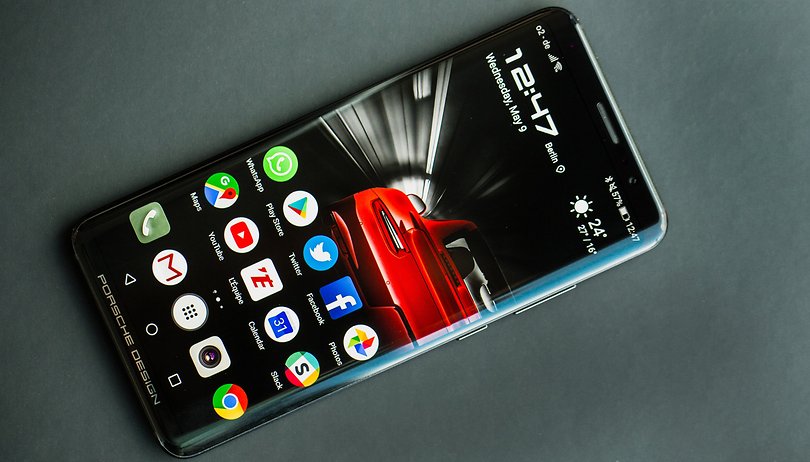

One of the most popular smartphone features is about to be revolutionized. The beloved fingerprint scanner is moving under the screen. The Porsche Design Huawei Mate RS is one of the first smartphones to get an in-display fingerprint scanner, and we gave it a test drive for several days. It left a positive impression, and we're confident it will change the way everyone unlocks their devices in the future.
From the classic fingerprint scanner to under the display
It has been several years since the fingerprint reader first appeared on our smartphones. Often in the front, sometimes on the back or even on the side (thanks, Sony), it was a quick hit with users. Why? It's a breeze to use, and the method is effective and secure.
In 2018, this popular feature is experiencing a bit of a revolution. One of the main reasons for this is the design of new devices. The bezels of our smartphones have shrunken and manufacturers want to find a way to save space. Many manufacturers therefore want to remove the home buttons which often house the fingerprint reader, and put a fingerprint reader under the screen instead. According to IHS Markit, the embedded fingerprint scanner will become extremely popular in 2019 with no less than 100 million smartphones produced.
Shipments of smartphones using ‘under-display fingerprint sensor’ is forecast to...top 100 million units by 2019
For the moment, though, very few manufacturers are offering an in-display fingerprint sensor in their smartphones. Among these models is the Vivo X20 Plus UD. Samsung or Apple have not yet decided to implement it, but Huawei has (pleasantly) surprised us by presenting its first smartphone equipped with this innovative technology.
Contrary to past rumors, this type of scanner was not integrated in the new Huawei P20 Pro after all, but on the Porsche Design Huawei Mate RS variant instead. The Chinese manufacturer is showing its willingness to innovate and its desire to be one of the pioneers of the feature.
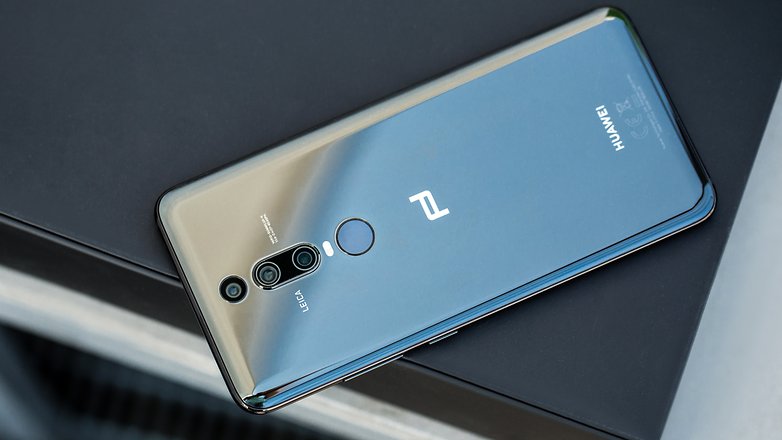
How does the in-display fingerprint sensor work?
Huawei didn't offer up any technical details, or name the supplier of its under-the-screen fingerprint reader technology. Fingerprint Cards was the company which made the behind-the-glass fingerprint reader on the Huawei Mate 9 Porsche Design. This same company has developed its own in-display fingerprint reader solution but no commercial deployment of the technology has yet been announced. Qualcomm also offers an identical solution. In short, it's still a mystery.
The Porsche Design Mate RS is equipped with an AMOLED display, the technology that seems most suited to this type of functionality. Specifically, the sensor recognizes the presence of a finger placed on the appropriate area of the screen and the screen then illuminates the area in blue. Then the sensor then records an image of the print which is then compared with one saved on the device. If it matches, you get in and the smartphone is unlocked. If it's not a match, it vibrates and asks you to try again (up to five times).

Huawei offers the ability to register multiple fingerprints, as is the case for the rear fingerprint scanner. The recording of the print is done simply and just as quickly (or almost) as it is with a classic scanner. The only difference is that you have to squeeze the screen a bit more to make your mark. It is not enough to just place your finger there. A little pressure is needed, but nothing too drastic.
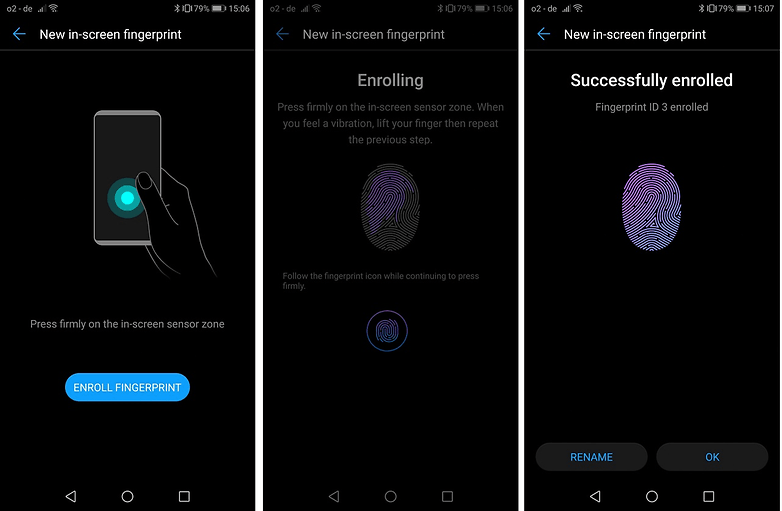
A pleasure to use
The most interesting thing to note is that recognition takes place relatively quickly, making this method of unlocking just as effective as the conventional fingerprint reader or facial recognition. Admittedly, these two techniques are still slightly faster on this model, but the position and ease of access of the scanner under the screen make it quickly more pleasant to use, and it's guaranteed to make your friends say wow.
From the beginning, I found the reader of the Mate RS very convenient. In most cases, my finger is recognized without any worries. The only drawback I find is that when you have your fingers slightly wet, it is a bit more difficult to use. But clearly, I have not been disappointed, as the system is reliable, efficient and fast. In recent months, facial recognition has been the one making the headlines, but I'm convinced that the in-display fingerprint sensor will quickly steal the show.
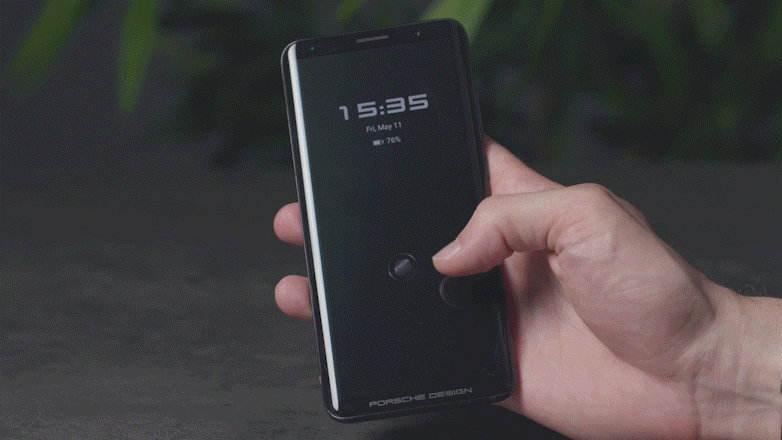
What do you think of Huawei's decision to move the fingerprint reader under the screen?
Source: IHS Markit







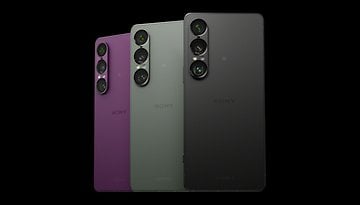
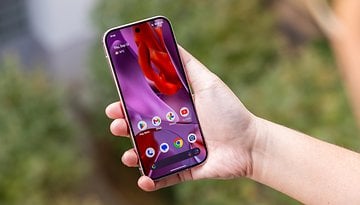
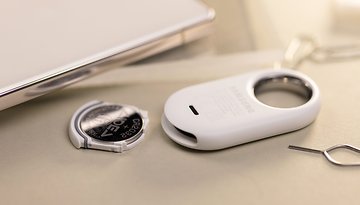
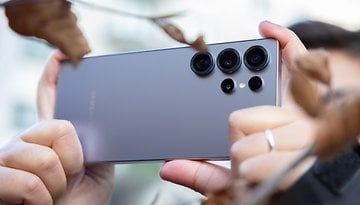
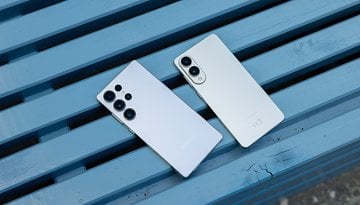


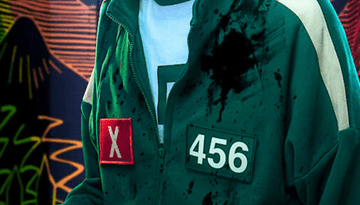



Woww..Excellent
I just wish they would leave it alone. I remember when I went from a PDA to a smartphone...had to get use to an on screen keyboard. Then PIN code/pattern unlock. I've just gotten use to using the back fingerprint button in the last couple years, so now of course they want us to get use to the on screen one. I'm OCD when it comes to keeping my screen clean, so I'd prefer to keep the rear fingerprint sensor myself.
I do not like finger print scanners on the front of the phone. I want it on the back it is just easier and more natural for me. I think all these facial recognition and iris are just gimmicks, and I do not want my face uploaded to the web. Don't give me the argument it just stay in your phone. If you believe that I have a nice bridge you might be interested in buying.
Do you actually believe that your face is not already uploaded to the web?
Wow... It looks promising....